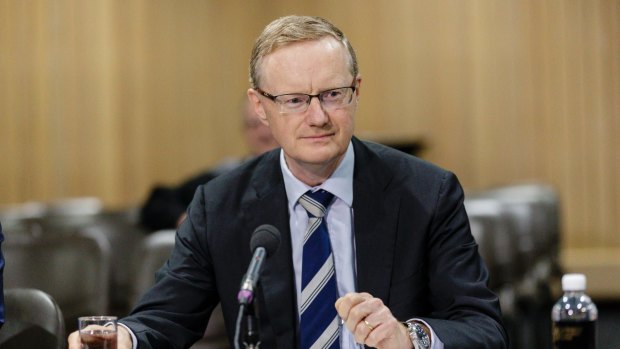Here's some common sense: It is not in our society's interest for house prices in the long term to rise more rapidly than our incomes.
But you don't have to believe the Herald on that because it's also the view of the new governor of the Reserve Bank of Australia, Philip Lowe.

New Reserve Bank of Australia governor Philip Lowe told a parliamentary economics committee that he was watching house price rises carefully.Credit: Brook Mitchell
On Thursday Dr Lowe made another telling point about his concerns, as a father of three children.
"People are paying so much" for houses, he bemoaned in his first appearance before the House of Representatives standing committee on economics.
Yet in talking about potential solutions to improve housing affordability, he did not talk about the tax breaks that help investors gain an unfair advantage and bid up prices.
Dr Lowe said he was more comfortable about the housing market than he was a year ago, and was careful not to encourage any talk of a bubble. That's wise because most capital city markets in Australia are weak.
But he was still concerned about "some pockets where prices were rising quite briskly". By that he means Sydney and to a lesser extent Melbourne.
Such warnings are usual for central bankers who worry about household debt and easy credit inflating prices.
Dr Lowe's comments are nonetheless politically significant given the conflict between the coalition and Labor on housing affordability.
In a speech hours after Dr Lowe's grilling, Shadow Treasurer Chris Bowen highlighted that in 1982, 62 per cent of people aged 25-34 owned their own home. By 2012, this was just 42 per cent.
He concluded that home ownership as a middle class aspiration in Australia "is becoming a pipe dream" and "we are a nation that can no longer house its own children".
That is somewhat hyperbolic, especially given that families can seek cheaper housing outside capital cities.
But Mr Bowen's basic point stands: that government policy settings are making matters worse.
"Those settings are working against middle income earners," he said. "Young people unable to crack into the housing market strips them of one of the most fundamental wealth drivers through their lifetime."
The Turnbull government rejected Labor's election policy of restricting negative gearing to new property and halving the capital gains tax discount on assets held for over a year. Prime Minister Malcolm Turnbull ran a cynical scare campaign and insisted property rise rises were mainly due to low supply.
Dr Lowe argued something similar. The solution to high prices, he argued, was "better housing supply and investment in transport infrastructure". Australians paid a lot for property because land was expensive, he said, which in turn was because "we all want to live in fantastic cities near the coast".
With respect, that is only part of the story.
We understand the political sensitivity of the new governor speaking on such issues. Indeed, Mr Stevens in December 2014 declined to become involved in a debate over tax breaks set off by the financial system inquiry review which noted the measures might have injected a "potential systemic risk" into the banking system.
But the RBA has warned often about the impact of negative gearing and capital gains tax on prices. In 2014 an RBA memo prepared for Mr Stevens argued the interplay between the two tax breaks "may encourage chasing of capital gains" and "investors bidding up housing prices".
In 2015 the RBA told a parliamentary inquiry there was "a case for reviewing negative gearing, but not in isolation. Its interaction with other aspects of the tax system should be taken in to account".
The RBA has called the Sydney house price surge of recent years "unbalanced" and Mr Stevens branded Sydney's market as "crazy". Last month he still felt some "discomfort".
Sydney's annual price growth has eased slightly thanks in part to regulators' efforts to limit bank loans to investors.
But the ABS-measured Sydney median house price is $880,000. The average price of residential dwellings in NSW is $799,500.
If lenders demand a 10 per cent deposit, new buyers seeking a house for just $500,000 need savings of about $50,000 and enough income to service a $450,000 loan. That is beyond most people, giving a distinct advantage to second-time purchasers, the offspring of wealthy parents and tax-savvy investors.
The Herald believe governments must tackle housing affordability by both increasing supply of new homes and reducing distortion by tax breaks. We look forward to hearing more from Dr Lowe on his view.